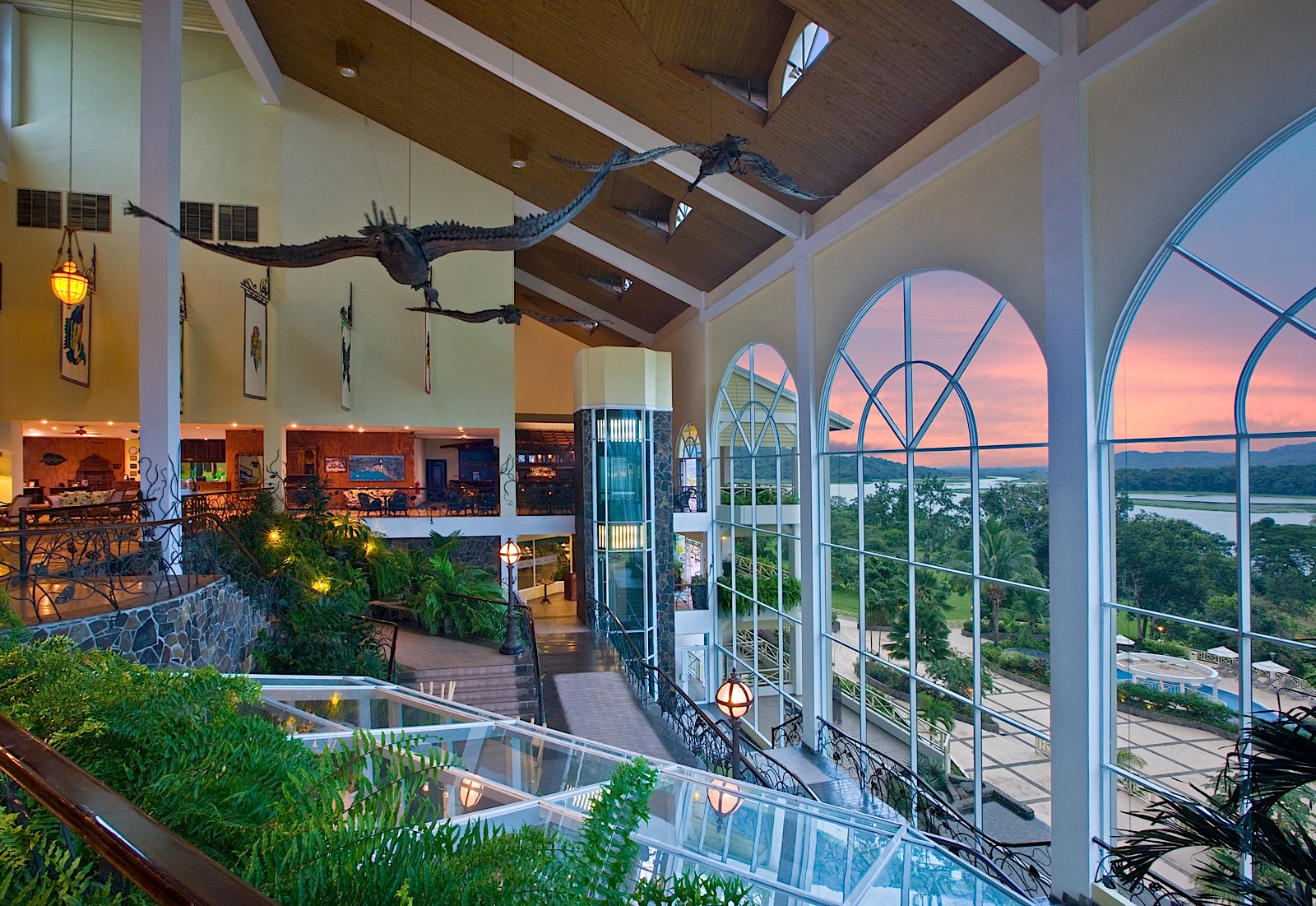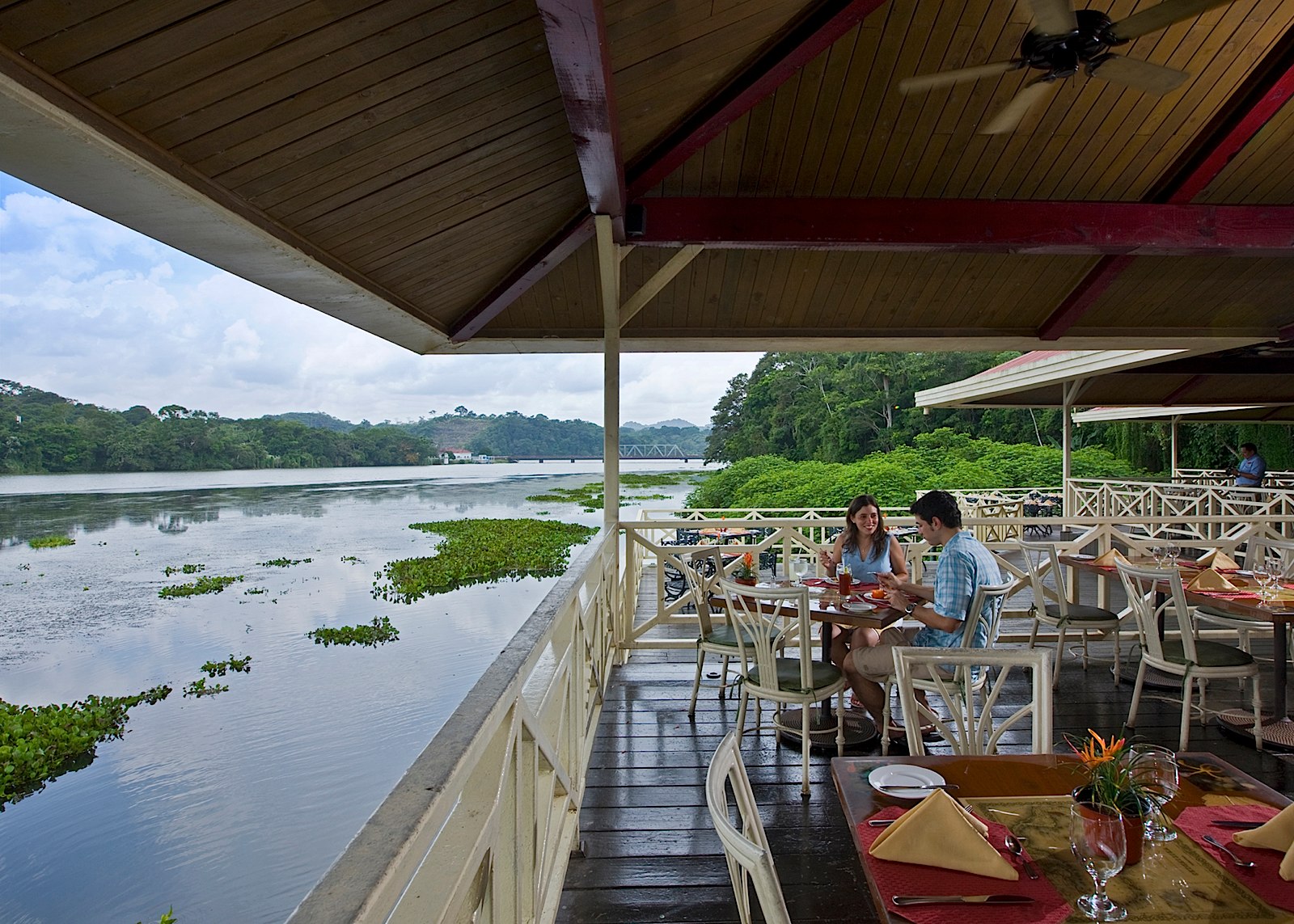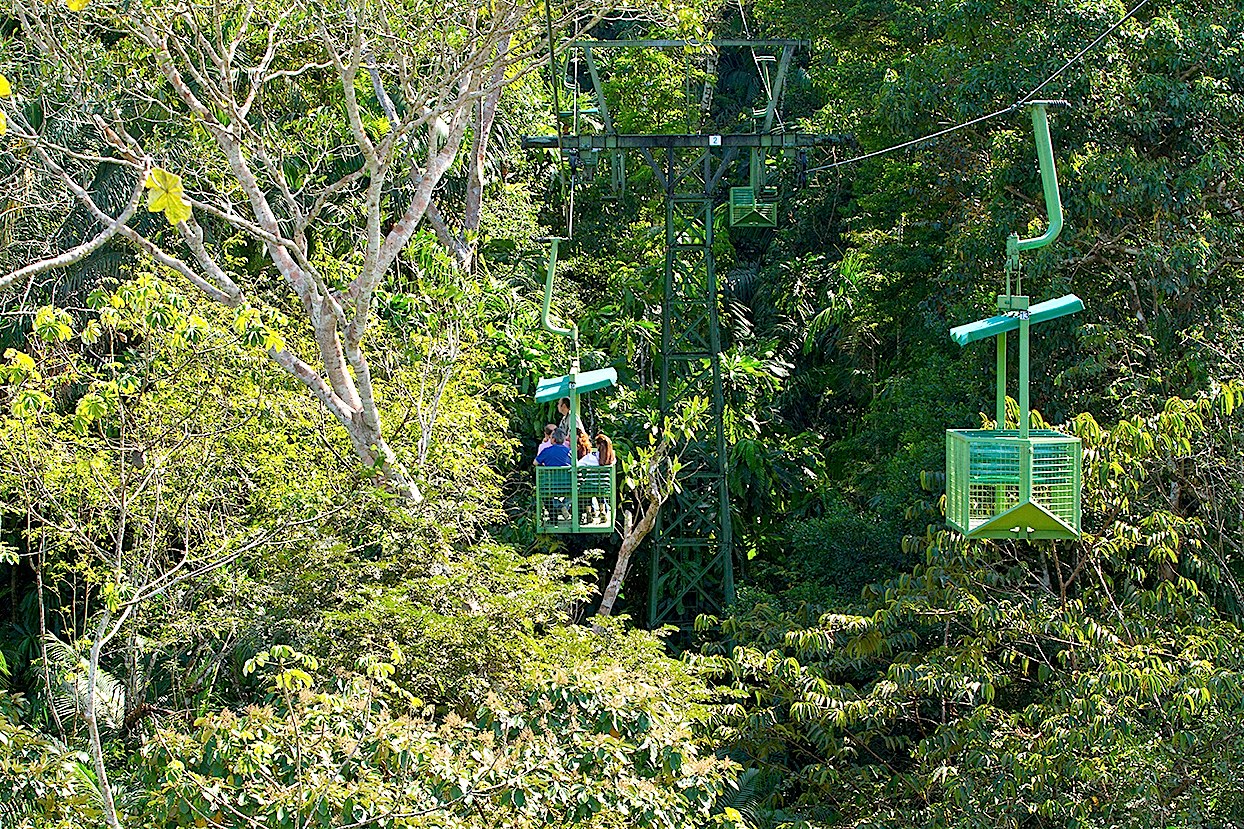Table of Contents
Gamboa is located about 45 minutes from Panama City, making it one of the best places to visit when staying in a hotel in Panama City. To get there you can take an Uber, arrange a private transfer or rent a car. Getting an Uber back can be slow, so it is best to tell the driver to wait. Of these options the private transfer is the most expensive one.

It is also possible to stay in Gamboa Rainforest Resort if you want to do more activities in the area. There is plenty to do in this destination which offers a perfect blend of eco tourism, sports and adventure.

History of Gamboa
Santa Cruz was one of the many towns that was wiped out of the map because of the construction of the Panama Canal. In 1911 they moved the town to the current location in order to create the Gatun Lake which was the largest artificial lake in the world at the time of its construction.
Gamboa was one of the many Canal Zone towns which originally started with an Afro-Antillean and non white United States population. Eventually it did get a white population, but was less desirable than other towns since it was further away. It was used for housing until 1999 when the United States gave back the Panama Canal. Nowadays it has some residents, but it’s mostly a wildlife area.

What to do in Gamboa?
Monkey Island Tour
The most popular thing to do in Gamboa is the monkey island tour which is also known as Lake Gatun Expedition. Depart from the Gamboa marina to enter the Gatun Lake, which is the second largest artificial lake in the world. Go into the Panama Canal navigating past enormous ships, freighters and cruises.
There are many species of birds which can be seen in this area which borders the Soberania National Park. Crocodiles and turtles are usually seen bathing in the sun on the shores. The “islands” are actually hill tops that became islands after the area was flooded. Three types of monkeys live in the islands: howler monkeys, Geoffrey’s tamarin monkeys and white faced capuchin monkeys. The last two jump on boats for tourists to feed them bananas and peanuts.
Panama Canal Crossing
Most people visit the Miraflores Visitor center to see the ships cross the Miraflores Locks of the Panama Canal. However, it is also possible to be in one of these ships when taking the Panama Canal Crossing tour. Most people book the partial transit which is usually available only Saturdays and Sundays. (Please consult for other dates and full canal transits).
This tour can start from the Amador Causeway or from Gamboa depending on the direction the ships are moving as it is only possible to transit the Culebra Cut in one direction. This was the most dangerous part of building the Panama Canal since they had to cut the continental divide. The tour will also pass by the Gatun Lake and the Pedro Miguel Locks, which are the second set of locks in the Pacific side.
Gamboa Canopy Zipline
Those who are looking for some excitement can book the Gamboa Canopy Zipline. Glide over treetops for 1.4 kilometers in 10 cables and 13 platforms. You will be rewarded with views of the Soberania Park, the Panama Canal and the Chagres River. It is possible to see monkeys, sloths, ñeques, iguanas and many species of birds during this Panama City zipline tour. Participants will be given a safety demonstration and the company has all the security measures in place.
Gamboa Aerial Tram
This aerial tram is the only one in Panama. Travel in a gondola 600 meters above the rainforest. At the end of the tram you will reach a hill which has a 30 meter observation tower. Go up nine ramp levels to reach the top which offers incredible 360º views of the Soberania National Park. It is also possible to see the crossing where the Chagres River feeds the Panama Canal to fill the Gatun Lake which allows the passage of ships. It is possible to see birds, sloths, monkeys, iguanas and other animals during the tour.

Gamboa Exhibitions
Many foreigners dream about seeing sloths and this is a guaranteed way of seeing them in the sloth sanctuary. Learn how they live, how they mate, what they eat, and what threats they are exposed to. This facility helps sloths recuperate so they can be released into the wild.
There is also a butterfly garden with around 200 species which are rotated throughout the year. The orchidarium showcases many orchid species, including the Holy Spirit orchid which is Panama’s national flower. See over 30 species of frogs which live in small tropical gardens which replicate Panama’s jungle and learn about their feeding and reproduction. This activity can be booked in combination with other tours.
Panama Rainforest Discovery Center
Panama Rainforest Discovery Center is perfect for those who want an easy bird watching experience. This center is managed by the Eugene Eisenmann Avifauna Foundation. Located within the Soberania National Park making it the perfect place for birdwatching in Panama City. It is possible to see up to 385 bird species, but more commonly 240. A special area is set up for visitors to see hummingbirds while drinking coffee or tea in chairs. Other animals such as sloths, coatis, agutis, monkeys and crocodiles can be seen as well.
The main attraction of the Panama Rainforest Discovery Center is its observation tower which has a spiral staircase of 174 steps which takes you up 32 meters to reach the top of the forest canopy.
Fishing in Lake Gatun
Fishing in Lake Gatun is one of the best things to do in Gamboa. Peacock bass was accidentally introduced around 1967. This species did quite well in the area reproducing to dominate over the native species. It is also possible to fish snook, sergeant and tarpon in this submerged forest. Tours include boat, captain, rig, bait, and rods.
Birdwatching in Soberania National Park
Pipeline Road is part of the Soberania National Park. It received its name in the 1940s when the allies cut a path through the rainforest to accommodate a pipeline which was never finished. This 17 kilometer trail is a bird watchers paradise. Over 350 species of birds live in the Soberania National Park. You can see birds like golden-collared manakin, keel-billed toucans, whooping motmot, species of trogons, parrots, raptors, and hummingbirds. It is best to go early in the morning. This tour in Gamboa takes about three hours on a flat trail.
Embera Wounaan Village
There is an Embera Wounaan Village in the Chagres River in Gamboa. It is just minutes away from the Gamboa Rainforest Resort. This is a great opportunity to learn about Panama’s indigenous communities. The traditional village is made up of raised thatched houses. Visitors will be greeted with music and dances. Learn about their culture and traditions. Lunch is included which is usually fish and plantain wrapped in plantain leaves. You can support the community by buying their crafts or getting a local temporary tattoo. This tour can be combined with monkey island or taken on its own.
Panama Canal Kayaking
Navigate through the Panama Canal in a kayak. There are permitted areas for kayaks out of the main navigation of ships. For safety reasons, kayaks cannot cross through the locks. You will be able to see plenty of wildlife as you cruise by. There are turtles, crocodiles, lizards, iguanas, sloths, and monkeys. It is also possible to see many species of birds including toucans, king fisher and fishing eagle. This tour will take you past the tropical research station of Barro Colorado which is managed by the Smithsonian.
Barro Colorado
Barro Colorado was created when the Chagres River was dammed to form the Gatun Lake in 1913. This flooding converted hills into islands, the same is the case with the monkey islands in Gamboa. Barro Colorado is one of the larger ones since it has an area of 15.6 square kilometers. It is part of a nature reserve with adjacent peninsulas which cover a total area of 54 square kilometers. Barro Colorado nature reserve was created by the United States government in 1923 and was given to the Smithsonian Tropical Research Institute in 1946. It is one of the most studied tropical forests in the world. It is possible to visit with prior reservations.
Summit Park
Located right before Gamboa, the Summit Municipal Park is a botanical garden and zoo. Animals are rehabilitated in a rescue facility for exotic and native wildlife. Those animals that cannot be returned are displayed for the public. It is possible to see jaguars, ocelots, margays, puma, foxes, coyotes, sloths, alligators, lizards, owls, and many others. The Summit Park also is home of harpy eagles, which are Panama’s national bird.
In total, the Summit Park of Panama City has 250 hectares with 55 hectares belonging to the botanical garden. This park was created in 1923 as the introduction garden for Canal Zone plants. Its function was to propagate over 1,000 tropical species including teak, coffee, sugar cane, lemon trees, mango trees, amongst others.
Summit Golf Course
The Summit Golf course was Panama’s first golf course, opening in the 1930s for the residents of the U.S. military bases and the workers of the Panama Canal. It was built in the Camino de Cruces National Park which was used by the Spaniards to cross gold, supplies and people through the isthmus until the Panama Canal Railroad Company built the railway.
Now it is part of the Summit Rainforest Golf Resort. Visitors can play in a 6,626-yard, par-72 championship course overlooking the famous Culebra Cut of the Panama Canal and Camino de Cruces National Park. This Panama golf course was designed by the American golf-course architect Jeffrey Myers.